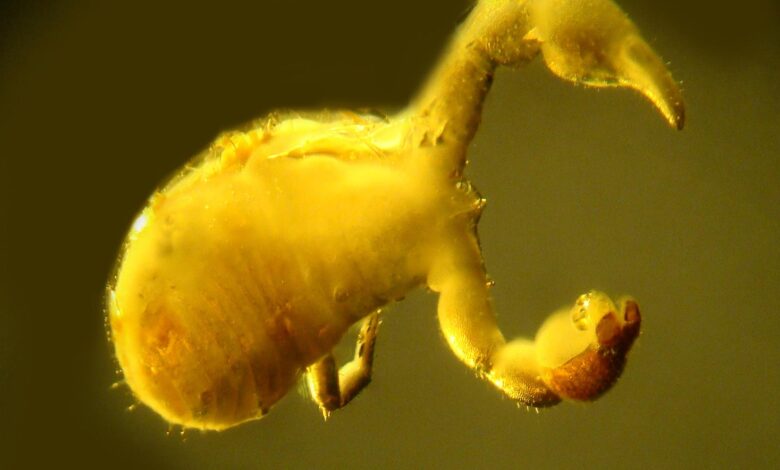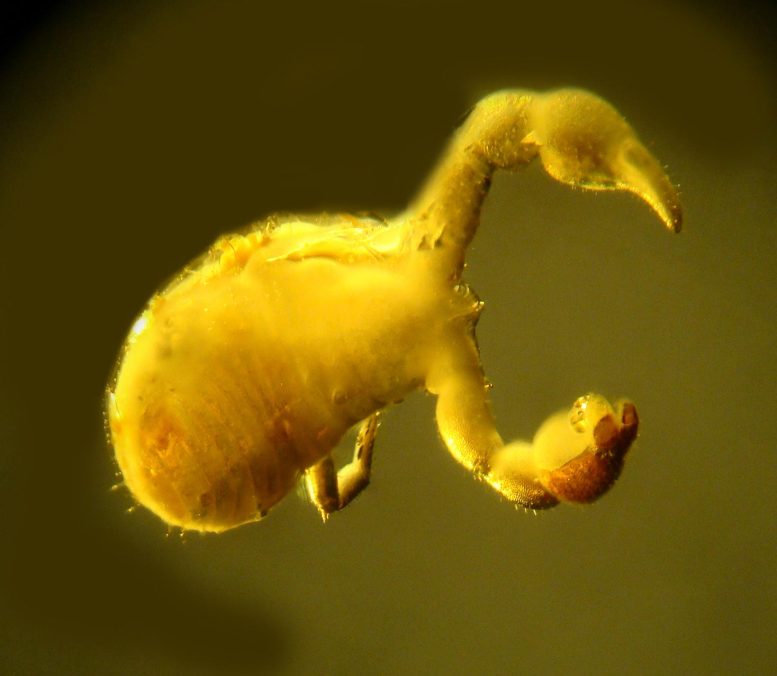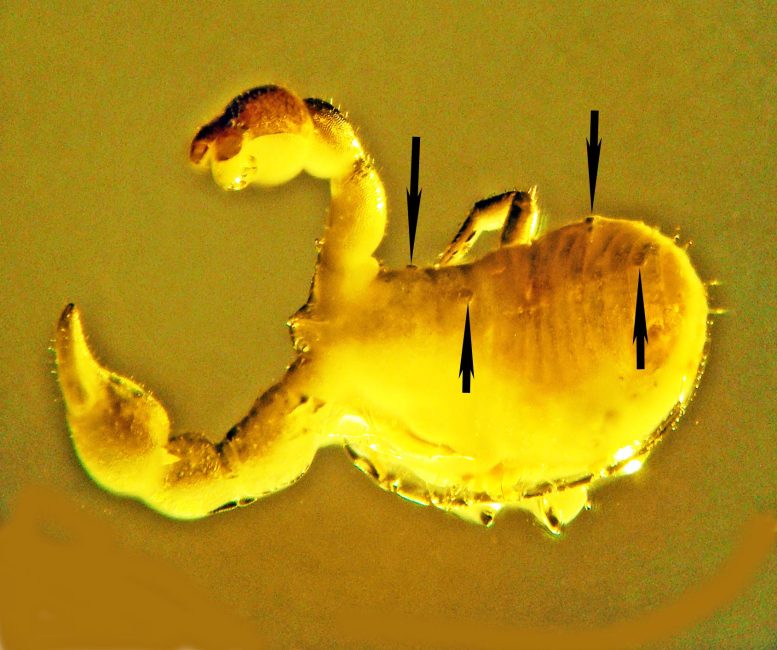“Very Unusual” – Scientists Discover Bizarre Parasitic Creature Preserved in Amber


In a parasitic first, a Baltic amber specimen has revealed that millions of years ago tiny worms known as nematodes were living inside of and feeding on the outer protective layer of pseudoscorpions. Credit: George Poinar Jr.
A new study uncovers ancient nematodes that fed on pseudoscorpions, captured in Baltic amber fossils.
The early bird gets the worm, but as fossil research by an Oregon State University scientist demonstrates, the early worm gets the arachnid. This intriguing finding comes from a study of a Baltic amber specimen which revealed that millions of years ago, tiny worms known as nematodes were living inside of and feeding on the outer protective layer of pseudoscorpions.
“This is very strange,” remarked George Poinar Jr., an expert in analyzing life forms preserved in amber and a courtesy faculty in the OSU College of Science. “No other invertebrate-associated nematodes are known to have this specific habit.” These findings were detailed in the journal Historical Biology.

In a parasitic first, a Baltic amber specimen has revealed that millions of years ago tiny worms known as nematodes were living inside of and feeding on the outer protective layer of pseudoscorpions. Credit: George Poinar Jr.
Pseudoscorpions and Nematodes: An Ancient Ecology
Pseudoscorpions, as described by Poinar, are a diverse lineage of arachnids. Smaller than scorpions, they lack a stinger and tail and inhabit various environments worldwide. These creatures are associated with a wide array of parasitic organisms, including nematodes.
Nematodes are among the planet’s most abundant animals, “free-living” in water, soil, and the Earth’s crust in addition to parasitizing a large collection of plant and animal species.
The fossil nematodes studied by Poinar show well-developed spear-type structures known as stylets. Similar to a hypodermic needle, a nematode uses its stylet to pierce cells and pull out food – in this case from the pseudoscorpion’s hypodermis, part of the outer covering known as the integument.
Fossil Classification and Research Implications
“Aside from the stylets, and being able to determine that some females were still enclosing eggs, other pertinent characters are not clearly visible,” Poinar said. “So I placed the nematodes in the established collective group genus Vetus, which was established in 1935 for fossil nematodes that could not be placed in any known extant family.”
Age estimates of Baltic amber vary widely, Poinar notes, from 23 million years to 55 million depending on who is doing the estimating and which method is used.
“The fact that some nematodes were able to establish such unique parasitic associations as what we are seeing is very unusual,” Poinar said. “It is hoped that this initial paper will spur researchers to follow up and find more about the systematic placement of these nematodes.”
Reference: “Ectoparasitic nematodes developing in the integument of a Baltic amber pseudoscorpion” by George Poinar, 19 May 2024, Historical Biology.
DOI: 10.1080/08912963.2024.2341848



